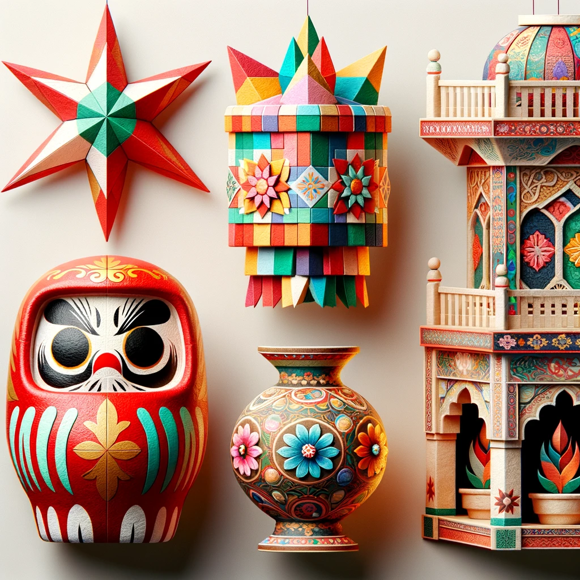Paper mâché, a versatile craft that combines creativity with sustainability, is practiced worldwide, taking on unique cultural characteristics in each region. Originating as far back as ancient Egypt, this art form is crafted by layering paper strips soaked in adhesive paste over a mold, then sculpting or painting to create intricate designs. Let’s delve into the diverse techniques from different cultures, exploring how this simple craft materializes into various forms.
Japan: The Art of Hariko
In Japan, paper mâché is known as hariko. It was popularized during the Edo period and remains a significant traditional craft. Craftsmen use paper mâché to create items like daruma dolls and inu hariko (dog figurines), each symbolizing good fortune or protection. The paper strips are soaked in a glue solution, usually made from starch, and applied over a clay mold. After drying, the form is removed, and the piece is intricately hand-painted. Vibrant colors and symbolic patterns often adorn the figures, reflecting their spiritual significance.
Mexico: The Piñata and Beyond
In Mexico, paper mâché plays a central role in cultural festivities, particularly with the creation of piñatas. Although piñatas were brought over by Spanish colonists, Mexican artisans infused their own creativity, evolving them into essential celebratory items. To make them, a clay or cardboard frame is coated with paper strips soaked in glue. Once the base is dried and shaped, it’s covered in bright tissue paper and decorated. Traditional star-shaped piñatas represent the seven deadly sins, while other shapes have adapted to reflect popular culture.
Kashmir: The Exquisite Paper Mâché Art
Kashmiri paper mâché, or kar-e-kalamdani, developed from Persian influences in the 14th century. Artisans use this technique primarily for creating delicate household items like vases, jewelry boxes, and trays. It begins with a base made from a pulp of paper and glue. After drying and sanding, craftsmen apply a white base coat and meticulously hand-paint floral patterns or intricate designs with gold and bright colors. The final step involves polishing with lacquer to achieve a durable, glossy finish.
France: The Craft of Carton-Pierre
In France, 19th-century artisans developed carton-pierre, a specialized form of paper mâché used primarily for architectural ornamentation. This technique involved layering paper with animal glue over a mold, resulting in highly detailed forms that could replicate plaster, stone, or wood carvings at a fraction of the weight and cost. These were often gilded or painted to mimic more expensive materials. The legacy of this craft still lives on in decorative arts.
Conclusion
Each culture breathes life into paper mâché through its unique traditions and purposes. Whether it’s the spiritual charm of Japanese hariko, the vibrant festivity of Mexican piñatas, the intricate designs of Kashmiri art, or the architectural elegance of French carton-pierre, this craft embodies a shared human creativity and ingenuity. Understanding these cultural variations not only broadens our appreciation of paper mâché as an art form but also celebrates the commonality and diversity of artistic expression across the globe.
